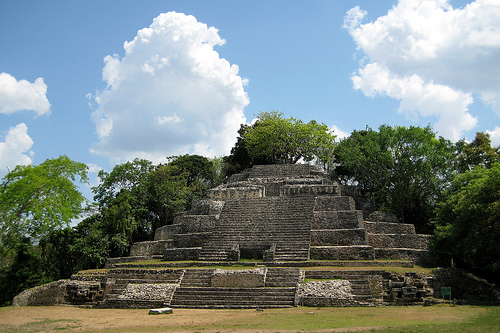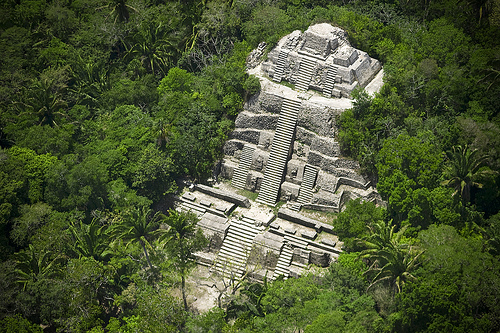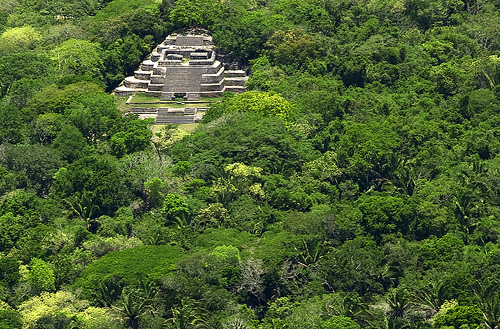Lamanai Archaeological Site

Location: Orange Walk District Map
Open: 8am- 5pm
Entrance Fee: BZ $10
Description of Lamanai Archaeological Site

Lamanai is an ancient Mayan archaeological site located on the shore of the New River in the Orange Walk District of Belize. History did not preserve the original name for this ancient settlement of Lamanai. Its modern name means "submerged crocodile" in the local Mayan dialect. Which brings in a side note. New River has crocodiles so be careful if you decide to approach it. The site was first settled in 1500 BC and there is evidence that it was inhabited till arrival of the Spanish conquistadors, although it lost most of its population upon the arrival of the Europeans. During the Spanish conquest of Yucatán Spanish friars established two Roman Catholic churches here, but a Maya revolt drove the Spanish out. The site was subsequently incorporated by the British in British Honduras, passing with that colony's independence to Belize. This city became an important trade out post for the copper metallurgy those deposits were found here.

The vast majority of Lamanai remained unexcavated
until the mid-1970s. Archaeological work has concentrated on the
investigation and restoration of the larger structures, most notably
the Mask Temple, Jaguar Temple, and High Temple. The summit of this
latter structure affords a view across the surrounding jungle to a
nearby lagoon, part of New River.
A significant portion of
the Temple of the Jaguar Masks remains under grassy earth or is
covered in dense jungle growth. Fully excavated, it would be
significantly taller than the High Temple. In the jaguar temple
there is a legend that you can find an ancient spear called the
heart of the jaguar, even though the temple got his name from the
jaguar masks on each side.
The Maya ruins of Lamanai once
belonged to a sizable Mayan city in the Orange Walk District of
Belize. "Lamanai" comes from the Maya term for "submerged
crocodile", a nod to the toothy reptiles who live along the banks of
the New River. Lamanai Belize jungle brims with exotic birds and
hydrophilic iguanas. There is evidence on Mayan life that dates from
about 1500 B.C. through Postclassic (A.D. 950-1544) and Spanish
colonial times (A.D. 1544-1700).